
Perennial Forbs Around Las Vegas, Vegetation Around Las Vegas
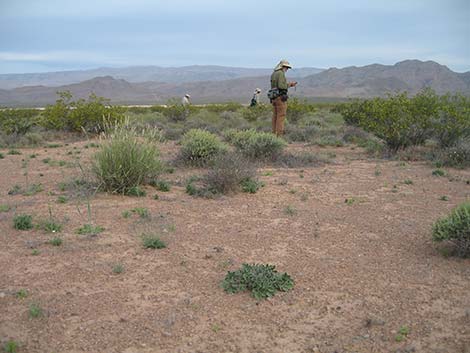 |
General: Indian Breadroot (Pediomelum castoreum) is a low-growing, somewhat mounded annual forb with many basal leaves and short flowering stalks. The petioles are long, the leaves are palmate (like a hand with an upright palm and fingers held upward), but the leaflets are unequal in length. Flowerheads look a bit like pine cones with purple pea flowers peeking out. Calyx lobes very unequal (lower lobe much enlarged). Indian breadroot is an uncommon component of desert vegetation communities. Around Las Vegas, look for this species northeast of town from the east end of Dry Lake Valley eastward into the northwestern corner of Arizona. Family: Legume (Fabaceae). Other Names: Beaver Dam scurfpea, Beaver scurfpea, beaver dam breadroot, beaver Indian breadroot, Psoralea castorea. |
 |
Plant Form: Perennial forb with a deep root. Height: To a few inches high. Stems: None. Leaves: Petiole to about 5 inches long; Blade palmate with 4 or 5 leaflets (like a lupine leaf). Flowers: Blooms in the spring. Inflorescence: dense raceme. Pea flowers purple, about 1/2 inches long. The flower has a single, broad, lower lobe. Seeds: Fruit is a hairy oval bean pod with a long, curved beak. Seeds ridged, gray, about 6-mm long. |
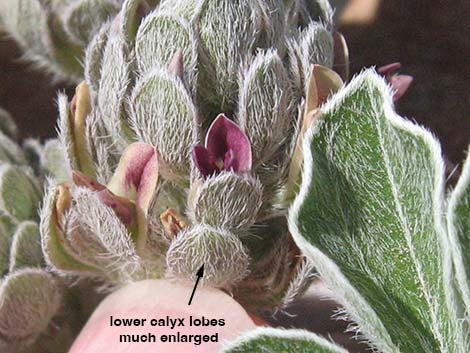 Lower calyx lobes much larger than the others (others not seen) |
Habitat: Desert flats with high mud content. Also apparently gravely and sandy soils. Elevation: To about 2,000 to 5,000 feet. Distribution: Southern Nevada (Clark Co.) and northwestern Arizona (Mojave Co.), eastern California. Distribution limited. Comments: This species is, or has been, considered sensitive by the BLM and USFWS. Conservation Status Rank is G3-S3: Vulnerable—At moderate risk of extinction due to a restricted range, relatively few populations (often 80 or fewer), recent and widespread declines, or other factors. |
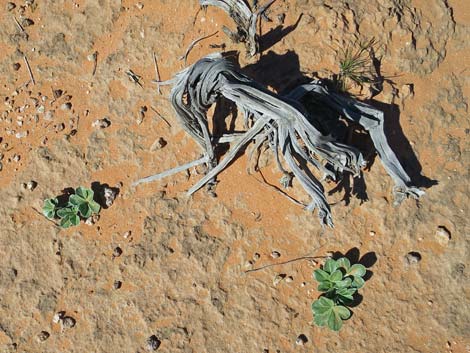 Indian breadroots in southern Gold Butte National Monument |
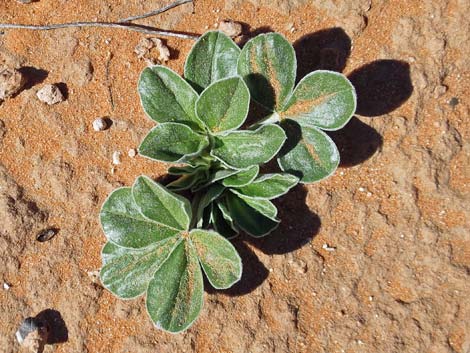 Indian breadroot in southern Gold Butte National Monument |
 Indian breadroot in southern Gold Butte National Monument |
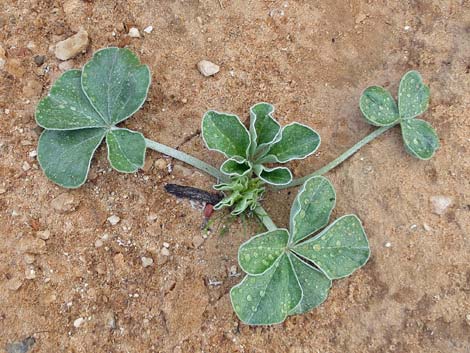 Indian breadroot: usually 5 leaflets, sometimes 3 or 4 |
 Indian breadroot in Grand Canyon-Parashant National Monument |
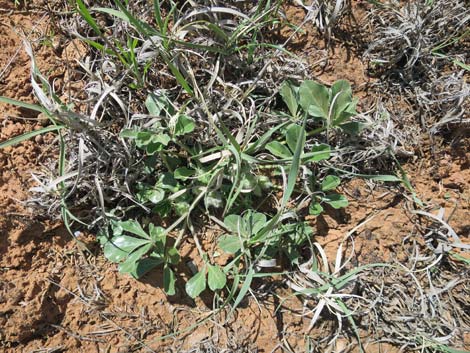 Indian breadroot in Grand Canyon-Parashant National Monument |
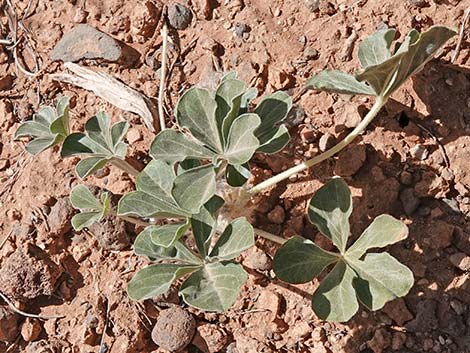 |
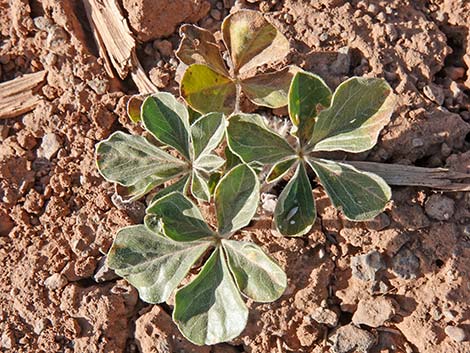 |
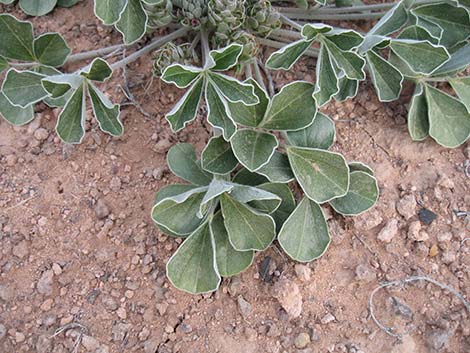 Indian breadroot leaves |
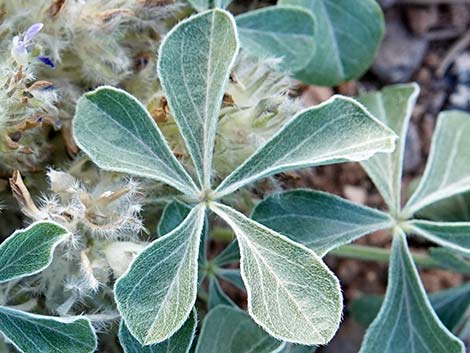 Indian breadroot leaves |
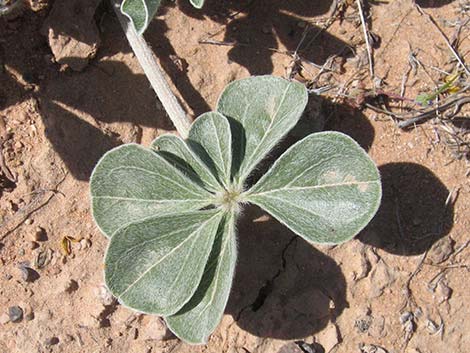 Indian breadroot leaf (dorsal surface) |
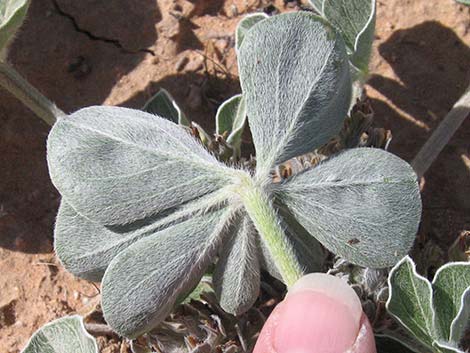 Indian breadroot leaf (ventral surface) |
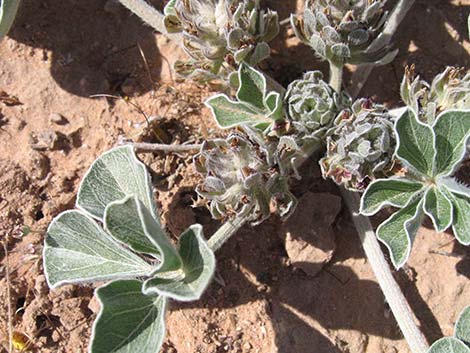 Indian breadroot flower buds |
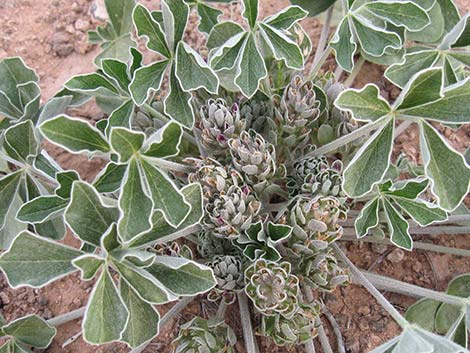 Indian breadroot flower buds |
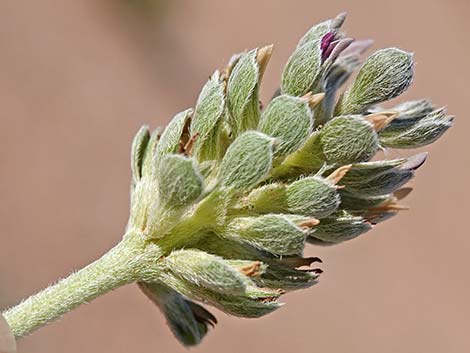 Indian breadroot flowerhead showing enlarged lower calyx lobes |
 Indian breadroot flowerhead showing enlarged lower calyx lobes |
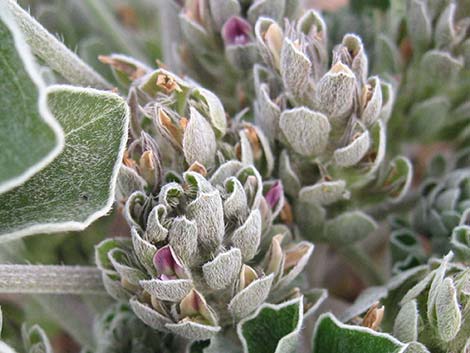 Indian breadroot flowers |
 Indian breadroot flowers |
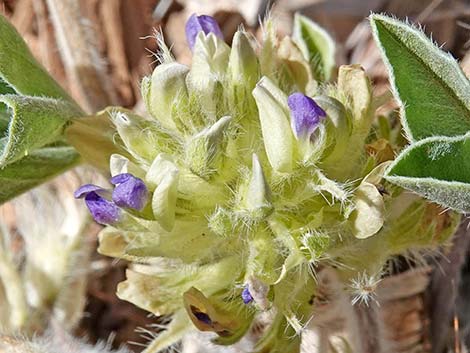 Indian breadroot flowers |
 Indian breadroot flowers |
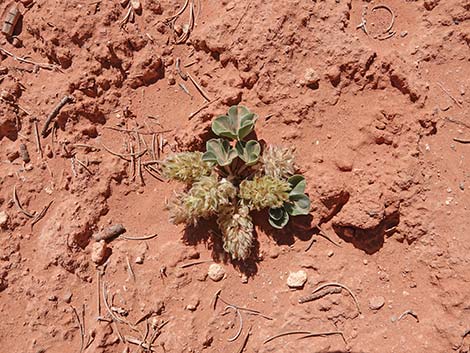 Indian breadroot going to seed |
 Indian breadroot going to seed |
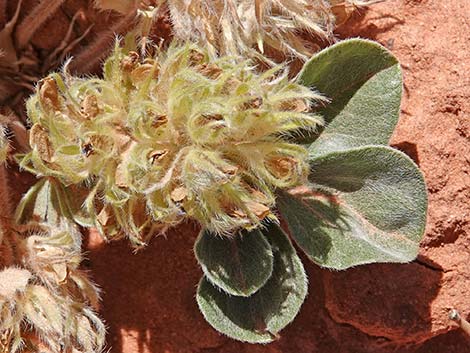 Indian breadroot going to seed |
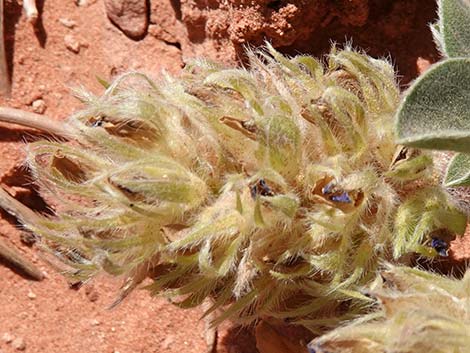 Indian breadroot going to seed |
Note: All distances, elevations, and other facts are approximate. Names generally follow the USDA database.
![]() ; Last updated 246022
; Last updated 246022
| All Perennial Forbs | Plant Species Index | Glossary | Copyright, Conditions, Disclaimer | Home |